 SPARKLING WINES
SPARKLING WINES
The climate in BC is well suited to making sparkling wines. The climate and terroir allow the creation of wines with natural high acidity levels and bright fruit flavours, meaning grapes can be harvested early and still have good flavour development.
Sparkling styles made in BC range from carbonated style through Traditional Method, i.e. the method used in the Champagne region of France. The best known BC wines are made by the Traditional Method and often spend one to four years ageing on their lees before being disgorged and released for sale.
Compared to international styles, BC sparkling wines fall somewhere between the austere and lees flavoured wines of Champagne and the riper, fruitier Traditional Method sparkling wines of Cava in Spain, or those of California or Australia. BC bubbles tend to age well thanks to their natural acidity. Most of the wines are made from the traditional Champagne grape varieties, Chardonnay and Pinot Noir, but there is some quality sparkling made from Riesling and other varieties.
 ROSÉ
ROSÉ
Rosé wines have become quite popular in the past few years. Gone are the days of the sweet white Zinfandel, replaced by a fresh, fruit-forward style. Though most wineries produce a dry style, some produce wines with some residual sugar balanced by wonderful, vibrant acidity. Because of their vibrant acidity and fresh flavours, these wines not only are extremely food friendly, but also provide the perfect patio sipper.
 ICEWINE & LATE HARVEST
ICEWINE & LATE HARVEST
In Canada, Hainle Vineyards Estate Winery in Peachland produced the country’s first Icewine in 1978. Canada is now recognized as the world leader in Icewine production. Generally, the only wine regions of BC where the winters are cold enough to provide the necessary conditions for Icewine are the Okanagan Valley and Similkameen Valley. Even there, the conditions for harvesting and pressing Icewine grapes generally happen few times per winter. In a given year, anywhere from 15 to 25 wineries will leave grapes on the vine in anticipation of an Icewine harvest.
In addition to Icewine, BC also makes Botrytis-affected wines and medium-sweet Late Harvest wines. The generally dry conditions in the Okanagan Valley and Similkameen Valley mean that Botrytis, or noble rot, is not widespread. Only a few producers consistently make a Botrytis-affected wine. Late Harvest wines are more common, with many producers choosing to leave some grapes to harvest later in the season when they are sweeter and then stopping the fermentation to make a wine with residual sugar.


